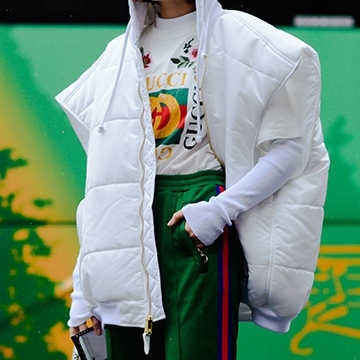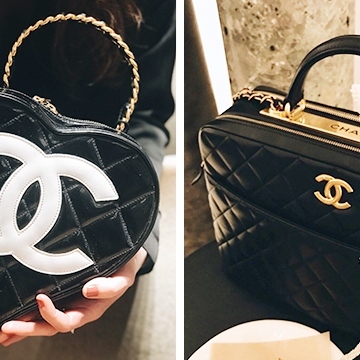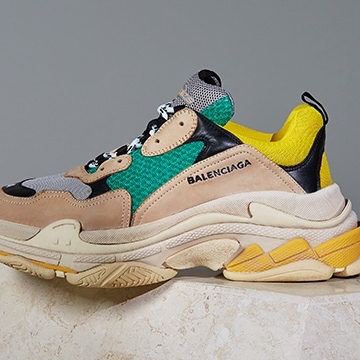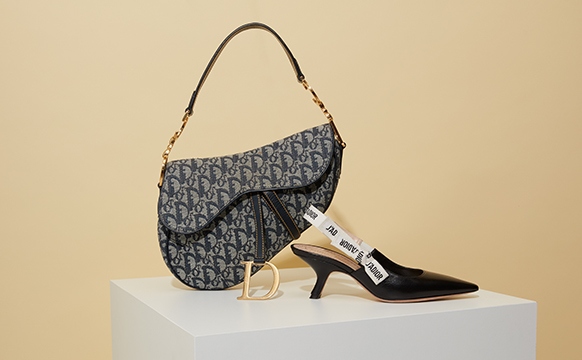
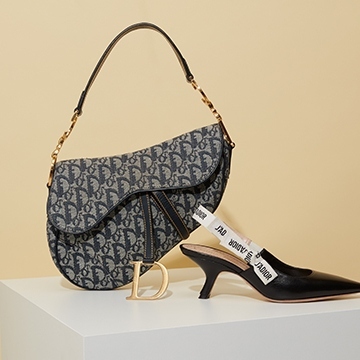
Expert Take: the Resurgence Of Logomania
In our latest expert installment, Los Angeles-based Associate Fashion Valuation Manager Billy Garcia examines the aughts-level craze for logos that’s once again taken the fashion industry by storm. With years of experience selling and buying vintage clothing personally and professionally, he’s seen trends come and go, and shares his perspective on how heavy-hitting brands like Gucci and Dior are doing things this time around.
Count them: more than ten major fashion houses in the last three years have welcomed a new designer to reign supreme. From Alessandro Michele at Gucci and Virgil Abloh at Louis Vuitton to Demna Gvasalia at Balenciaga and Maria Grazia Chiuri at Dior, it’s certain that change is in the air.
But it’s not just any type of change. Never before has there been such an emphasis on reintroducing a brand’s identity and house codes to seasoned fashion veterans. But why the focus on revamping the past for contemporary appeal? The new, ferociously strong millennial market that’s swept through the industry like a tornado.
From Gucci’s GG to Fendi’s FF to bold BALENCIAGA, we’ve gone from the minimalism Phoebe Philo ushered in to a time of full-blown logos, where young consumers want to conspicuously display their brand loyalty. Ten years ago it was considered passé to wear such a blatant depiction of wealth, but now designers are pressured to meet consumer desires head-on. Dissecting all the runway shows over the last few years, this shift in the zeitgeist is visible in many major brands’ collections, with monogram mania at the center of ateliers’ integrity and credibility.
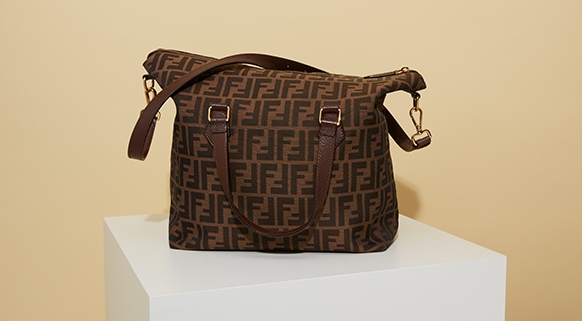
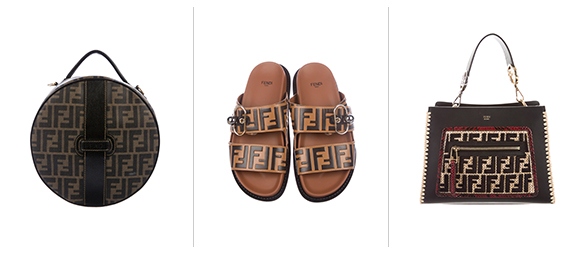 Fendi Vintage Zucca Crossbody; Fendi 2018 Zucca Slide Sandals; Fendi 2018 Leather & Raffia Bag
Fendi Vintage Zucca Crossbody; Fendi 2018 Zucca Slide Sandals; Fendi 2018 Leather & Raffia Bag
Though historically many designers take on the grandiose position of trying to shake up the market with self-indulgent ideas, they tend to always keep some close relation with the history of the brand. Now, designers of all backgrounds (e.g. Virgil Abloh, who has degrees in both civil engineering and architecture) push the limits of what they can show on the runway, yet they rely on the tried-and-true notion that revisiting a classic always helps balance out bad reviews, boost sales and even stabilize the ever-precarious creative director’s position.
It’s alarming, however, to see designers I’ve respected for years cave and follow suit with the second coming of logos. It’s almost comical to see Gucci use formerly fake branding like GUCCY in new collections. Never in a million years would the Italian atelier sell the fashion elite anything that could be even remotely identified as fake, let alone alienate loyal customers with such a bold move. Yet in the end, it’s paid off as a playfulness in fashion and the hunger for logos both grow. Sales for Gucci under Alessandro Michele have risen significantly compared to the ‘90s Tom Ford era of Gucci, when the house was virtually on the verge of bankruptcy until Ford arrived and revitalized the house.
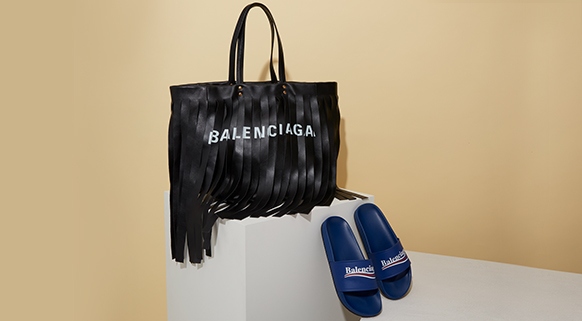
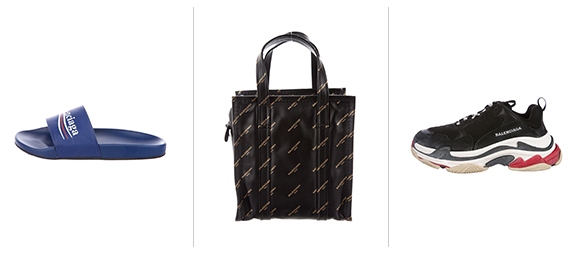 Balenciaga 2017 Campaign Logo Slides; Balenciaga Logo Bazar Tote; Balenciaga 2018 Triple S Sneaker
Balenciaga 2017 Campaign Logo Slides; Balenciaga Logo Bazar Tote; Balenciaga 2018 Triple S Sneaker
Balenciaga, never a logo-heavy brand, has also followed suit with the newly minted BB logo, which Demna Gvasalia pulled from the house’s vintage garment tags. Seen on everything from handbags to the uber-coveted Triple S Sneakers, there’s no denying the BB is an attempt to hop on the Gucci GG Supreme bandwagon. Balenciaga’s campaign branding, which touched on Bernie Sanders’ presidential campaign visuals, was a shocking commentary on corporate logos that never would have flown in the past. It was also a direct route into the hearts and minds of millennials, with its irony splashed across everything from hoodies to poolside slides.
Some of the clothes shown today on the runway aren’t accessible due to the growing cost of materials and labor, but accessories are much more easily integrated into the everyday wardrobe. Each house has their iconic handbag, shoe or belt that, at some level, has never gone away. And with technology and social media playing such a huge part in the lifecycle of trends, it’s easy to see why everyone wants to stand out.
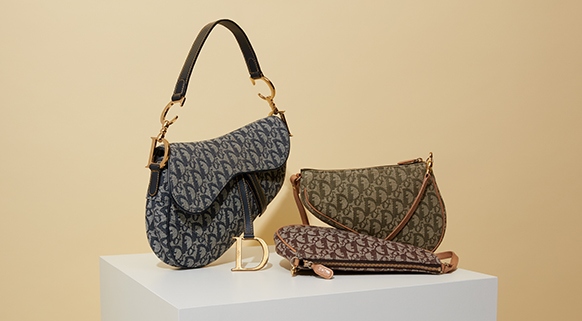
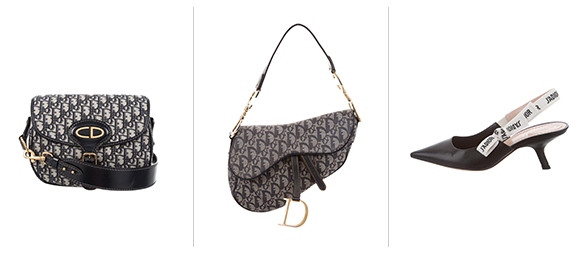 Dior 2017 Oblique Saddle Bag; Dior Diorissimo Saddle Bag; Dior 2017 J’adior Ribbon Pumps
Dior 2017 Oblique Saddle Bag; Dior Diorissimo Saddle Bag; Dior 2017 J’adior Ribbon Pumps
It’s also easy to see how older styles are now the norm. Millennials are finding their individuality through their nostalgia with vintage handbags like the Dior Saddle bag, introduced by John Galliano on the Spring 2000 runway. Maria Grazia Chiuri reintroduced the Saddle likely due to the influence of the underground fashion scene adopting items that no one would touch and making them cool again. (Beyoncé may also be one to thank for its revival). A few years ago, the Saddle had very little resale value and if it did, it was only for rare, limited edition pieces. Now, it’s more than tripled due to this trend.
The Fendi Baguette is another casualty, an outdated It bag denigrated to the realm of low resale until recently. The alternating FF logo, created by Karl Lagerfeld in the ‘90s and originally dubbed “Zucca,” is now known as FF and has made an alarmingly fast comeback. And we can’t forget Gucci, which has released a slew of GG Supreme pieces as an ode to styles of old, married with influencer-friendly appliqués, embroidery and colorful graphics. Gucci’s iconic GG coated canvas, launched in the late ‘70s as the Gucci Accessories Collection, was rebranded as Gucci Plus in the early aughts and evolved into GG Supreme à la Alessandro Michele in 2015.
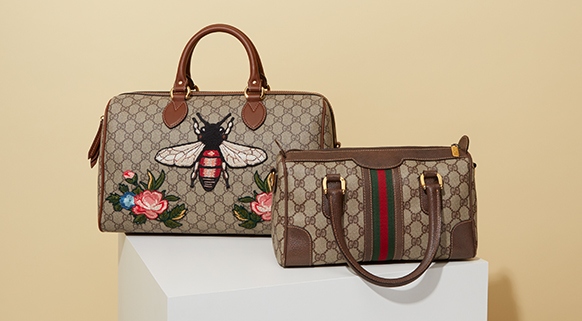
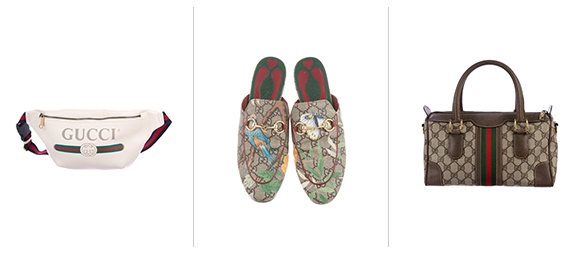 Gucci 2017 Leather Belt Bag; Gucci Princetown Tian Mules; Gucci Vintage GG Plus Boston Bag
Gucci 2017 Leather Belt Bag; Gucci Princetown Tian Mules; Gucci Vintage GG Plus Boston Bag


